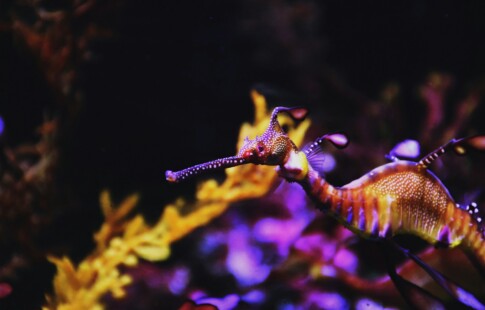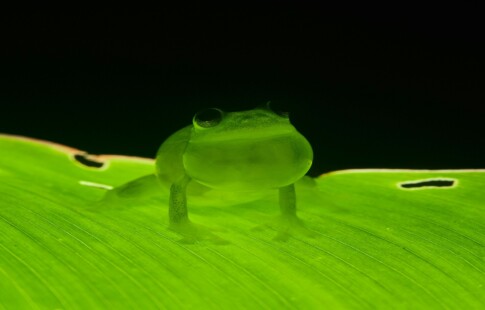
What Happens to Plastic in the Ocean?
We are reader-supported. When you buy through links on our site, we may earn affiliate commission.
Unlike some other kinds of waste, plastic doesn’t decompose. Many items, like plastic toothbrushes and coffee pods, can take up to 500 years to break down. That means whatever plastic ends up in the ocean will stay there long after we’re gone. Sadly, there’s already tons of the stuff floating and sinking around the world’s seas.
Where does it end up, exactly? The answer may soon be “everywhere,” but there are a few specific spaces where plastic is causing a significant amount of harm.
Mariana’s Trash Trench
When plastic enters the ocean, 94% of it sinks to the seabed. It should come as no surprise, then, that scientists found rubbish in Mariana’s Trench, too. This underwater canyon lies in the deepest part of the ocean, and, sadly, it’s littered with plastic waste.
At 10,975 meters, you might assume the ocean’s depths to be lifeless. Yet, they host more wildlife than most people realize. A few years ago, the Okeanos Explorer deep-sea vessel even found jellyfish, octopus, and coral. They also found plastic in the bellies of about 72% of crustaceans that live in the deep-sea trenches. When it’s not ending up in animals’ stomachs, the plastic degrades over hundreds of years, leaching toxic chemicals as it does.
The Great Pacific Garbage Patch
Compared to how much plastic waste has sunk, there’s relatively little floating on the surface. And yet, hundreds of thousands of tons — roughly 1% of all plastic that’s in the ocean — still litter the waves. None are as notable as the Great Pacific Garbage Patch. Spanning 1.6 million square kilometers, the patch is roughly three times the size of France. Currently, it sits between Hawaii and California.
Garbage patches like this one spread all the way across the surface and to the ocean floor, ensnaring and poisoning practically everything in its path. Packing straps, six-pack rings, plastic bag handles and other items trap and strangle marine life while smaller plastics become part of their diet and kill them from the inside out. Debris can also float for hundreds of miles and introduce invasive species that overcrowd and disrupt ecosystems.
Seabirds and Coastal Ecosystems
One of the most moving photos from the anti-plastic movement is that of a decomposing albatross chick, its stomach overflowing with plastic fishing line, bottle caps and other waste. Hundreds of thousands of seabirds meet the same demise each year. It’s clear that ocean plastic simply doesn’t stay in the ocean. Many seabird parents snatch plastic waste from beaches and feed it to their young, sealing their fate before they’ve even left the nest.
In fact, it seems that there’s more plastic on beaches than there is in high seas garbage patches. This plastic pollution puts more wildlife at risk since coastal ecosystems contain more life than the open ocean. Just consider how many coral reefs, fish and other animals live along shorelines — both on land and at sea.
Micro and Nanoplastics
Micro and nanoplastics also present major problems for both people and animals. As plastics break down, they disintegrate into smaller pieces until they’re almost invisible to the naked eye. These are called microplastics, and many animals mistake them for food. Fishing boats then collect fish, crustaceans and other marine life that feast on microplastics and, eventually, they end up in seafood lovers’ bellies, too.
Microplastics can also make their way into your diet by further degrading into nanoplastics. Experts estimate that the average American consumes more than 70,000 nanoparticles each year. People who consume only bottled water may ingest an additional 90,000. These nanoplastics contain and attract many different chemicals that may contribute to cancer.
Clean Up and Conservation
Despite all the bad news about ocean plastic, a small percentage of it does come out of the ocean for good. Thanks to ocean clean-up and conservation efforts, volunteers and researchers have cleared many miles of coastline and made a small dent on the Great Pacific Garbage Patch. Others are designing automated machines to clean more inaccessible ocean ecosystems like the deep trenches and high seas.
While humans may never remove all of the ocean’s plastic, the amount they can remove is significant. Future efforts should prioritize coastline where life is most abundant and plastic pollution is most prevalent.
Considering the Big Picture
Cleaning up plastic waste as it enters the environment is virtually impossible. That’s why it’s important to consider the big picture and cut off the problem at its source. Call on major corporations to ditch single-use plastics and invest in eco-friendly packaging. In the meantime, start recycling or nix plastics altogether. You can make a difference all is not lost. But we’ll have to work together if we want to save the seas for future generations.
Share on
Like what you read? Join other Environment.co readers!
Get the latest updates on our planet by subscribing to the Environment.co newsletter!
About the author

Steve Russell
Steve is the Managing Editor of Environment.co and regularly contributes articles related to wildlife, biodiversity, and recycling. His passions include wildlife photography and bird watching.





